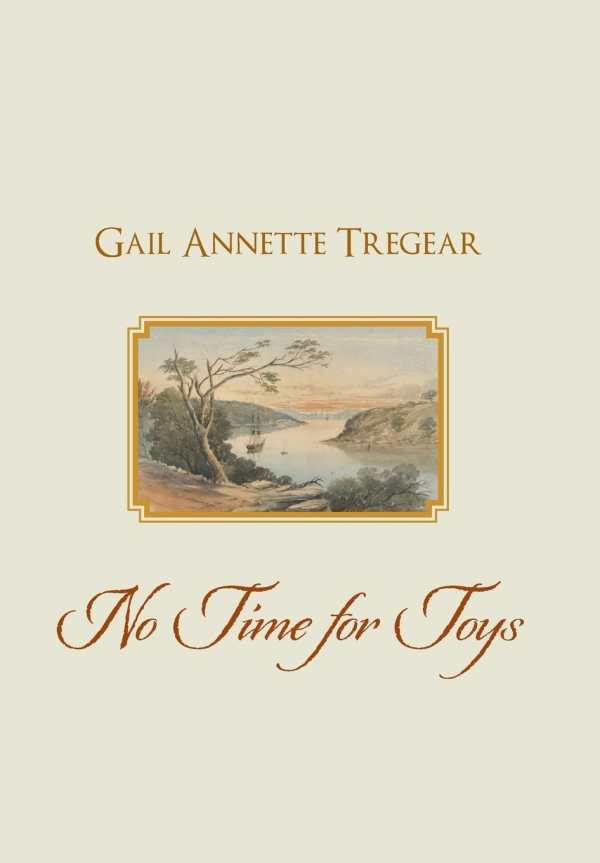No Time for Toys
Brief but cinematic, No Time for Toys is a polished, century-spanning historical tale.
Based on a true story, Gail Annette Tregear’s brief and gripping historical novella No Time for Toys follows an English child who is exiled to nineteenth-century Australia.
In the summer of 1817, four-year-old Sarah Thatcher, her mother, and two brothers board a ship for Australia. Her father was sentenced to fourteen years of exile there for possession of counterfeit currency, and Sarah’s mother is given the same sentence for the same crime.
The children’s mother dies before the ship lands. Sarah and her brothers are separated in Australia, and Sarah is sent to a girls’ orphanage. At fourteen, she’s married off to a convict twenty-three years her senior. The book chronicles Sarah’s long, often difficult, and quite remarkable life.
The story opens with Sarah asking an innocent question: why a sailor is sewing a canvas. His answer, as searing as it is simple, transforms Sarah’s life. This is the only time Sarah speaks in her own words, though. Gail Annette Tregear, Sarah’s great-great granddaughter, takes an immense risk by stepping back from Sarah and focusing on the world around her, recounting only the established facts of Sarah’s life. The opening scene has so vivified Sarah that attention flows into the void, imagining her feelings more acutely than words could convey.
Meticulous research underlies the story, with myriad minute details coming into play—for example, the seemingly endless voyage through a tropically hot summer, with the ship’s water strictly rationed. As the story moves forward, public records, letters, and other contemporaneous sources follow Sarah as a young widow and then as a single mother with seven children, working to give them a normal childhood. She transforms herself from exiled orphan to a property owner, businesswoman, and postmistress.
Australia emerges as a character unto itself–– tough, vivid, and as disadvantaged as Sarah is. The prose is lean and spare, with just enough details to convey the prevailing near-lawlessness of the time. Portraits of Melbourne—then a scattering of mud huts and tents, with under three hundred residents—emerge through a few deft sentences, as do the massive changes that came with the discovery of gold.
A timeline proves helpful for keeping names and dates straight, while excerpts from original sources and a bibliography round out the text. Brief but cinematic, No Time for Toys is a polished, century-spanning historical tale.
Reviewed by
Susan Waggoner
Disclosure: This article is not an endorsement, but a review. The publisher of this book provided free copies of the book and paid a small fee to have their book reviewed by a professional reviewer. Foreword Reviews and Clarion Reviews make no guarantee that the publisher will receive a positive review. Foreword Magazine, Inc. is disclosing this in accordance with the Federal Trade Commission’s 16 CFR, Part 255.

